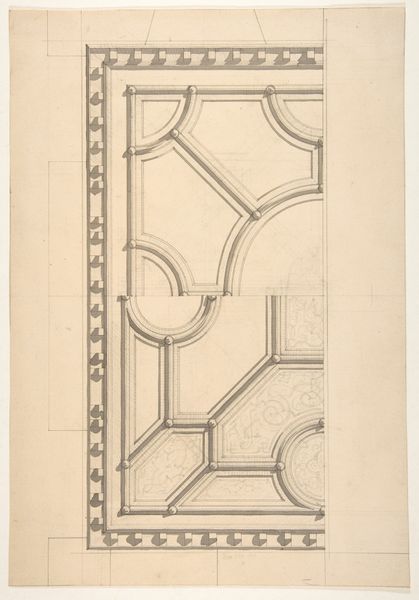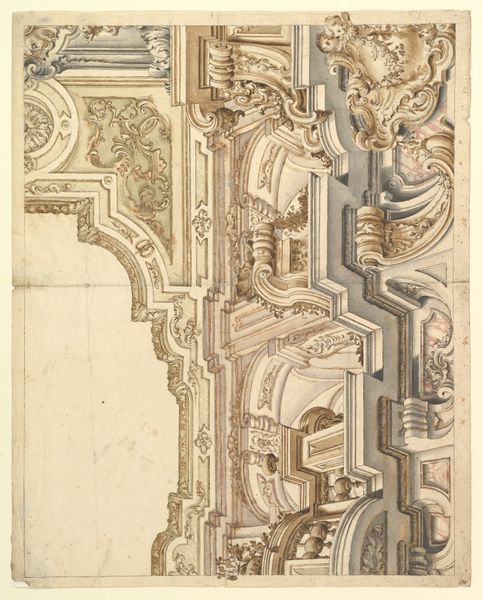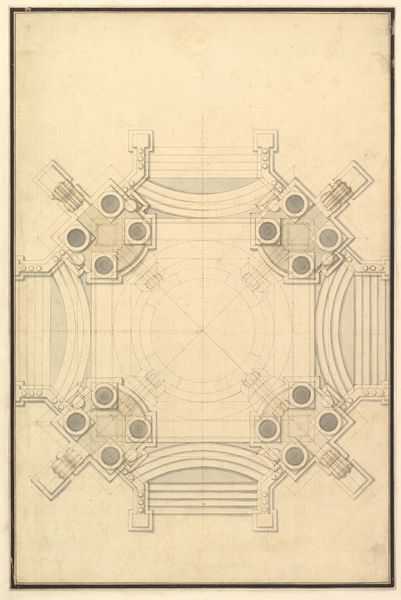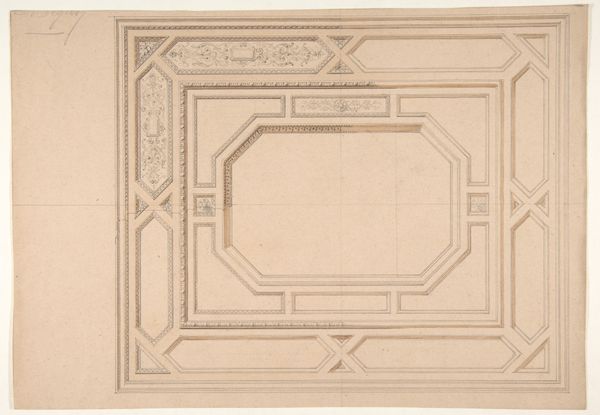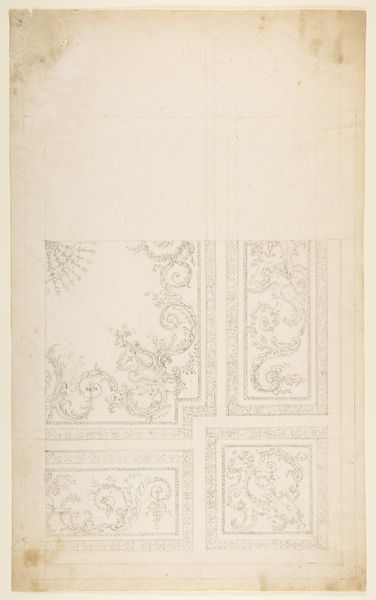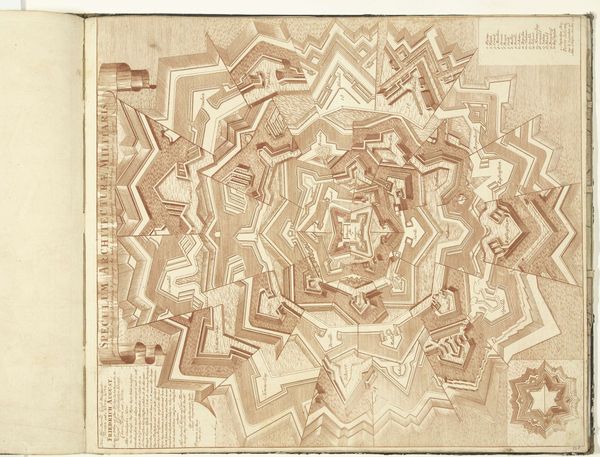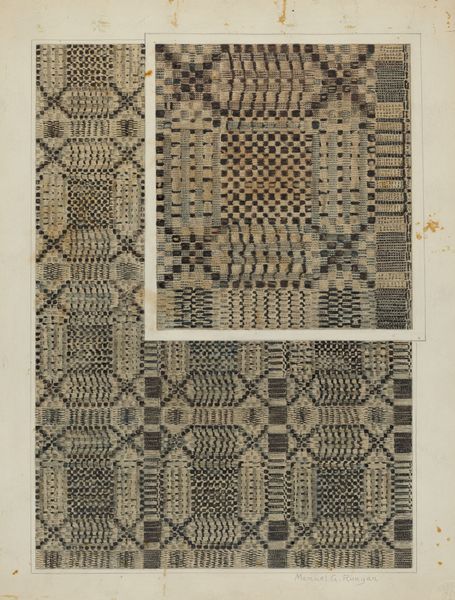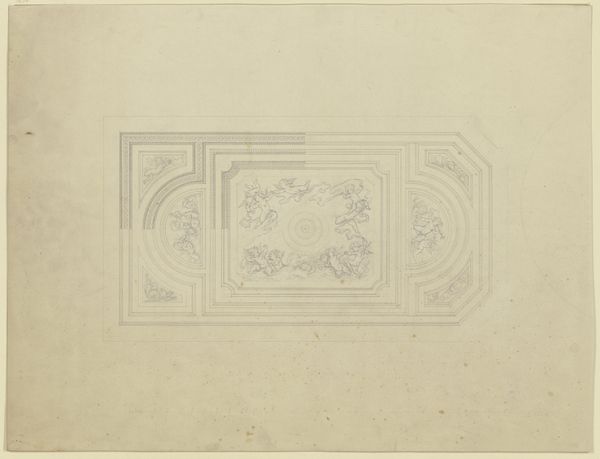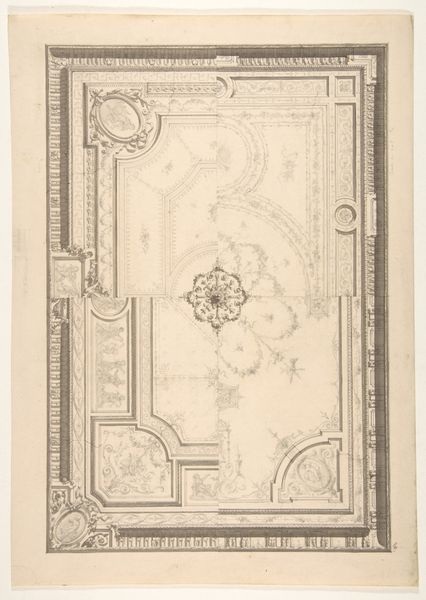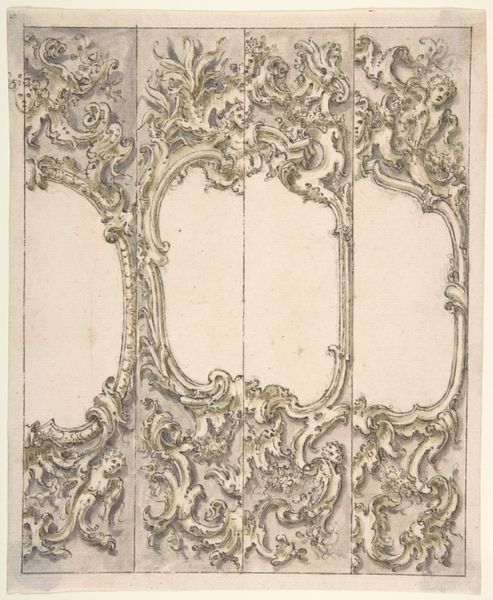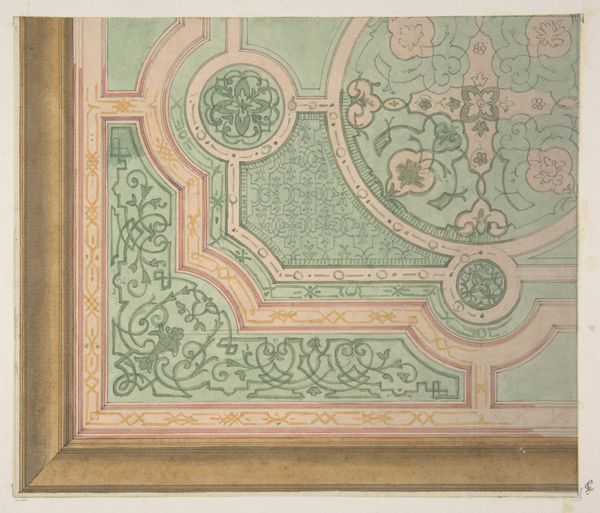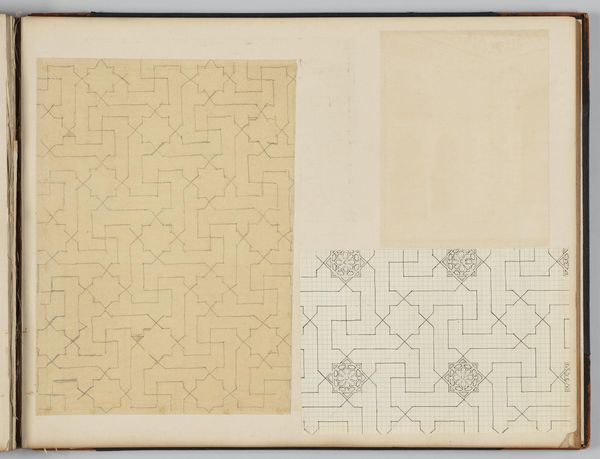
Palazzo Pontifici, Sala Regia, coffer panels, reflected ceiling plan (recto) blank (verso) 1500 - 1560
0:00
0:00
drawing, print, paper, ink, architecture
#
drawing
#
ink paper printed
# print
#
paper texture
#
paper
#
11_renaissance
#
ink
#
geometric
#
history-painting
#
architecture
Dimensions: sheet: 17 5/16 x 11 7/16 in. (44 x 29 cm)
Copyright: Public Domain
Editor: So, this is a drawing titled "Palazzo Pontifici, Sala Regia, coffer panels, reflected ceiling plan," created between 1500 and 1560 by an anonymous artist. It’s ink on paper and currently resides at the Met. It looks like a blueprint for an ornate ceiling; very geometrical and intricate. What strikes you when you look at it? Curator: The geometry is indeed compelling, but let's look beyond the surface. These aren’t just shapes, they are laden with cultural and religious significance. The octagon, the circle, the diamond—how were these shapes understood in Renaissance thought? Remember, the circle often represents perfection, divinity; the square, earthly stability. What might the combination of these shapes, in this papal palace, signify? Editor: Hmm, so the geometric forms become symbolic… the divine meeting the earthly, maybe representing the power of the papacy? Curator: Precisely! And look at the floral motifs intertwined with geometric forms. The flower, a symbol of rebirth and growth. Consider also the “reflected” nature of the plan, as if mirroring the earthly with the celestial. The architecture becomes a microcosm. Doesn’t this imbue the very space with a sense of divine order, legitimizing the power residing within the walls? Editor: I never thought of architectural drawings in this symbolic way. It’s more than just a design; it's a statement! Curator: Exactly. By understanding these symbols and their historical context, we move beyond aesthetics and gain a deeper insight into the cultural memory embedded within the artwork, and the intended psychological effect of such spaces on those within them. Editor: So, even a ceiling design can reveal layers of meaning about power and beliefs of the time. That's fascinating!
Comments
No comments
Be the first to comment and join the conversation on the ultimate creative platform.
